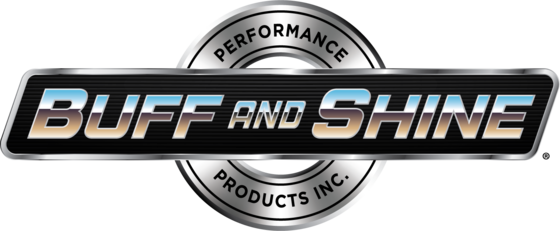Long Throw Polisher - Pads
The main characteristic of a long-throw or high-action dual-action polisher is that the oscillation pattern of the head is much wider than that of a standard dual-action polisher. That is, the pad swings out much farther as it orbits around the center. The amount that the pad swings out from the center of the machine is called “throw”. The extended throw of a high-action polisher creates more friction and action against the paint surface.
This gives long-throw or high-action dual-action polishers the capability to perform more extensive paint correction than the standard dual-action machine, while still maintaining a relatively large margin of safety against paint damage or overheating. Many technicians find that they can perform most standard paint correction activities without the need for moving up to a rotary polisher. Other technicians will follow up extensive rotary polisher correction sessions with a high-action D-A to remove swirls and technical imperfections left by the rotary.
So, the long-throw or high-action dual-action polisher is great for light to moderate paint perfection activities (perhaps even more), and also great for wax/sealant application.
7" Uro-Tec™ Coarse Blue Heavy Cutting Foam Pad
- Loop diameter: 6"
- Foam thickness: 1.25"
- Face diameter: 7"
- Polisher recommendation: 21mm Long Throw D.A.
7" Uro-Tec™ Maroon Medium Cut/Heavy Polishing Foam Grip Pad™
- Loop diameter: 6"
- Foam thickness: 1.25"
- Face diameter: 7"
- Polisher recommendation: 21mm Long Throw D.A.
7" Uro-Tec™ Soft White Finishing Foam Grip Pad™
- Loop diameter: 6"
- Foam thickness: 1.25"
- Face diameter: 7"
- Polisher recommendation: 21mm Long Throw D.A.
7" Uro-Tec™ Yellow Polishing Foam Grip Pad™
- Loop diameter: 6"
- Foam thickness: 1.25"
- Face diameter: 7"
- Polisher recommendation: 21mm Long Throw D.A.
6" Uro-Tec™ Coarse Blue Heavy Cutting Foam Pad
- Loop diameter: 5"
- Foam thickness: 1"
- Face diameter: 6"
- Polisher recommendation: 15mm Long Throw D.A.
6" Uro-Tec™ Maroon Medium Cut/Heavy Polishing Foam Pad
- Loop diameter: 5"
- Foam thickness: 1"
- Face diameter: 6"
- Polisher recommendation: 15mm Long Throw D.A.
6" Uro-Tec™ Yellow Polishing Foam Pad
- Loop diameter: 5"
- Foam thickness: 1"
- Face diameter: 6"
- Polisher recommendation: 15mm Long Throw D.A.
6" Uro-Tec™ Soft White Finishing Foam Grip Pad™
- Loop diameter: 5"
- Foam thickness: 1"
- Face diameter: 6"
- Polisher recommendation: 15mm Long Throw D.A.
3" Uro-Tec™ Coarse Blue Heavy Cutting Foam Pad
- Loop diameter: 3"
- Foam thickness: .750"
3" Uro-Tec™Maroon Medium Cut/Heavy Polishing Foam Pad
- Loop diameter: 3"
- Foam thickness: .750"
3" Uro-Tec™ Yellow Polishing Foam Pad
- Loop diameter: 3"
- Foam thickness: .750"
3" Uro-Tec™ Soft White Finishing Foam Grip Pad™
- Loop diameter: 3"
- Foam thickness: .750"




































